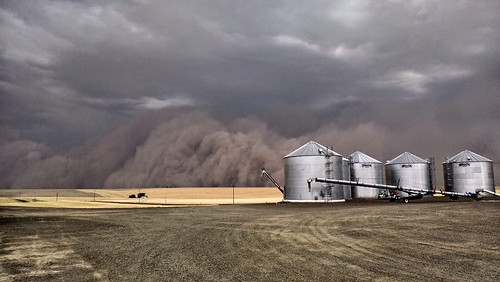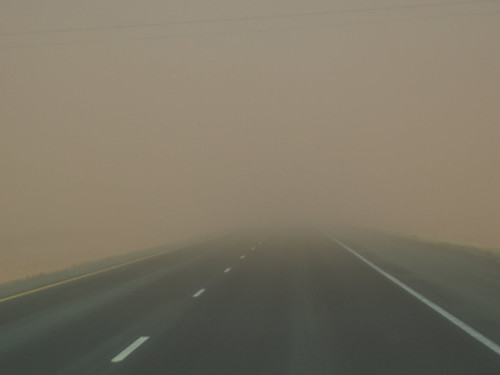
USDA’s Natural Resources Conservation Service and state Soil and Water Conservation Districts has partnered for decades on protecting, restoring and enhancing private lands across the United States. Jim Armstrong is communications and special projects coordinator with the Spokane County Conservation District in Washington. – Jennifer VanEps, NRCS Washington
Haboob: a funny word, but its meaning is far from laughable. Defined as a type of intense dust storm carried on an atmospheric current, haboobs can have catastrophic effects on both land and life.
Dry August winds often stir up dust clouds in central and eastern Washington, but 2014 was exceptional. On Aug. 12, an enormous, miles-wide haboob, which was reminiscent of those from the Dust Bowl era, descended upon eastern Washington. Two weeks later, another dust cloud caused a 50-car pile-up in the southern part of the state, sending multiple people to the hospital and shutting down Interstate 82.
The main source of the dust was unprotected farm fields, either after harvest or lands that have been left vacant for the year. In other words, there were no plants covering the soil between crops being planted.
When farmers using conventional tillage techniques are working the ground, the tractors and drills kick up dust. Substitute 40- to 50-mph winds in place of the tractor and drill, and soil erosion increases exponentially. Combine several hundred thousand acres of farm land and 50 mph winds and you have a haboob.
Conventional farming practices include using implements such as discs, plows, chisels, harrows, sprayers and drills to prepare the soil for planting a single crop. All can be pulled behind a tractor around the same field, one at a time to prepare the soil for planting. Four to eight passes depending on the crop are made over the same field to establish that crop.

The end result of repetitive disturbance is topsoil that has been worked into a fine powder, which is easily and rapidly lifted into the air with even the slightest of winds, creating soil erosion events of the type Washington experienced in August.
One of the techniques used in the drier areas west and south of Spokane, Washington, is called deep furrow planting. This method places the seed down where the moisture level should be by the end of summer. In many cases, that equates to six to eight inches below the surface.
Much of this type of planting occurs on fields where they grow a winter crop one year, and then let the field stay dormant, often called fallow, the following year. The fallow fields are continually worked during the summer to prevent vegetative growth, in theory, to protect moisture from being removed. But studies have clearly shown that bare soil can have temperatures 40 degrees or higher than soils covered with vegetation or even stubble for shade.
Increased soil temperatures and evaporation can quickly dry the soil. There is an alternative though, and it’s more sustainable. No-till farming is the practice of placing the next crop’s seed and fertilizer into the ground through the previous crop’s stubble or residue.
This does a couple of very important things. First, it leaves the soil undisturbed as the drill moves through. Second, no-till farming protects and retains topsoil moisture, making it available to plants.
Research shows that for every tillage operation where the soil is disturbed, up to a half inch of moisture is lost. Add up the three or four tillage operations in a conventional system and the moisture loss is significant.
Fortunately, USDA’s Natural Resources Conservation Service works with farmers and private landowners to help improve soil health practices and prevent these types of disasters, including helping farmers adopt no-till on their land.
The haboob was a clear reminder that more soil conservation work is needed. But the good news, more farmers are embracing new technologies as well as proven conservation practices available to them, which will help mitigate disasters like the recent haboobs in Washington.



